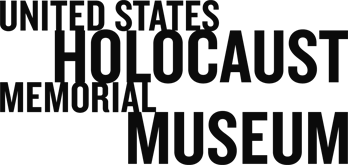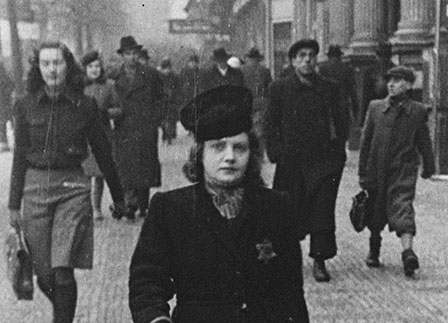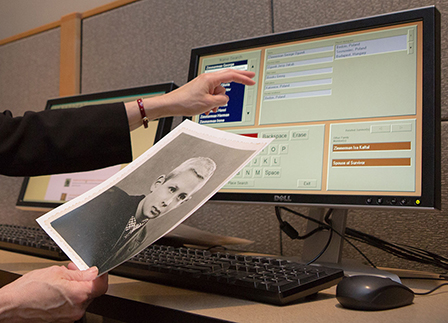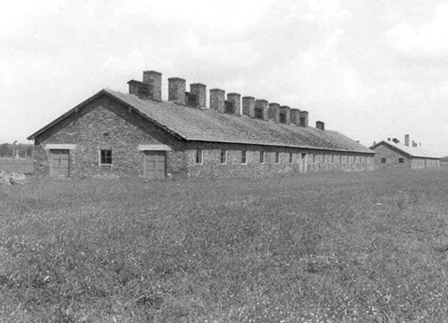Overview
- Brief Narrative
- Black long sleeved judicial gown worn by Justice Daniel T. O’Connell, an American judge who sat on Military Tribunal I during the Subsequent Nuremberg Trials in Germany from October 20, 1947, to February 17, 1948. Justice O’Connell was a superior court judge from Massachusetts and tried Case #8, the RuSHA case. On trial were the leading officials of Rasse- und Siedlungshauptamt [Race and Resettlement Main Office] or RuSHA, an organization that oversaw the racial purity and cleansing policies and programs of the Nazi government. Fourteen defendants were tried; 13 were found guilty.
- Date
-
use:
1947 October 20-1948 February 17
- Geography
-
use:
courtroom;
Nuremberg (Germany)
- Credit Line
- United States Holocaust Memorial Museum Collection, Gift of Robert F. Callahan
- Contributor
-
Subject:
Daniel T. O'Connell
- Biography
-
Daniel Theodore O’Connell was born on July 6, 1878, in Boston, Massachusetts, to an Irish Catholic family. His parents were born in Ireland, James in November 1845, and Elizabeth, in December 1845. He had 6 siblings, all born in Boston: Joseph F., on December 7, 1872, Mary C., in February 1874, John A., in April 1875, James E., on January 24, 1877, Patrick F., in August 1880, and Bessie M., in December 1882.
Between 1897-1906, Daniel worked as an associate newspaper editor of a weekly law paper and as a political editor at the Boston Post. In 1900, he served as secretary to Congressman H.F. Naphen in Washington, D.C. In 1905, he received a Bachelor of Law degree from Harvard and served as secretary to Boston Mayor John F. Fitzgerald in 1906. In 1908, he graduated from Boston University Law School with a Master of Law degree and became a junior partner in the law firm Jos. F., J.E. & D.T. O’Connell. He obtained a Doctor of Law degree from Boston University in 1912. During World War I (1914-1918), he was a captain in the Judge Advocate General’s (JAG) department of the Army and served postwar as a major in the JAG reserves. He was appointed associate justice of the Superior Court of Massachusetts in 1928. He married and had a daughter.
World War II began in Europe on September 1, 1939, when Germany invaded Poland. The United States entered the war on December 8, 1941, after the Japanese attack on Pearl Harbor, and declared war on Germany on December 11. On May 7, 1945, Germany surrendered to the Allies, ending the war in Europe. Leading German officials were tried before the International Military Tribunal (IMT) in Nuremberg, Germany, for crimes against peace, war crimes, crimes against humanity, and conspiracy. Each Allied nation, the United States, Great Britain, France, and the Soviet Union, supplied a judge and a prosecution team; the rules of the trial were an amalgamation of the Continental and Anglo-American judicial systems. Judgments were handed down on October 1, 1946. On December 20, 1945, the Control Council for Germany had enacted Law No. 10 which allowed for the prosecution of second-tier Nazi war criminals not tried by the IMT. These 12 trials were known as the Subsequent Nuremberg Trials. On September 30, 1947, Military Tribunal I, on which Justice O’Connell sat, reconvened to try Case #8, the RuSHA case. On trial were the leading officials of Rasse- und Siedlungshauptamt [Race and Resettlement Main Office] or RuSHA. The organization oversaw the racial purity and cleansing policies and programs of the Nazi government. The 14 defendants were charged with crimes against humanity, war crimes, and membership in criminal organizations. The trial lasted from October 20, 1947 to February 17, 1948. Judgment and sentences were handed down on March 20; 8 were found guilty on all counts, 5 guilty of membership in a criminal organization, and 1 not guilty.
Justice O’Connell retired in 1958. He died in Larchmont, New York, on March 10, 1964, at the age of 85.
Physical Details
- Classification
-
Clothing and Dress
- Category
-
Men's clothing
- Object Type
-
Robes (lcsh)
- Physical Description
- Black, pleated, long sleeved cloth robe with a front opening and a braided cord and button adornment on the upper back. There is a hook and eye, loop and button, and snap closure on the front. On the collar interior is a metal hook, a blue square cloth label embroidered with English text, numbers, and a circle, and a black rectangular cloth label embroidered with English text.
- Dimensions
- overall: Height: 50.000 inches (127 cm) | Width: 52.000 inches (132.08 cm)
- Materials
- overall : cloth, thread, cord, metal, plastic
Rights & Restrictions
- Conditions on Access
- No restrictions on access
- Conditions on Use
- Restrictions on use. Object is in very poor condition, it has vinegar syndrome and it is stored in cold storage. If access is requested Collections Services must be consulted.
Keywords & Subjects
- Topical Term
- Judges--United States. Lawyers--United States. Nuremberg War Crime Trials, Nuremberg, Germany, 1946-1949.
- Geographic Name
- United States--Politics and government--1933-1945.
- Corporate Name
- International Military Tribunal
Administrative Notes
- Legal Status
- Permanent Collection
- Provenance
- The judicial robe was donated to the United States Holocaust Memorial Museum in 2010 by Robert F. Callahan, the grandson of Daniel T. O'Connell.
- Funding Note
- The cataloging of this artifact has been supported by a grant from the Conference on Jewish Material Claims Against Germany.
- Record last modified:
- 2023-08-25 09:51:01
- This page:
- https://collections.ushmm.org/search/catalog/irn42420
Download & Licensing
In-Person Research
- By Appointment
- Request 21 Days in Advance of Visit
- Plan a Research Visit
- Request to See This Object
Contact Us
Also in Daniel T. O'Connell collection
The collection consists of a judicial robe and a photograph relating to the experiences of Justice Daniel Theodore O'Connell who was a presiding judge at the Race and Resettlement Office (RuSHA) main trial in Nuremberg, Germany, from October 20, 1947, to February 17, 1948.
Date: 1947 October 20-1948 February 17
Justice Daniel T. O'Connell photograph
Document
Photograph of Justice O'Connell in the courtroom, date and location unknown.



